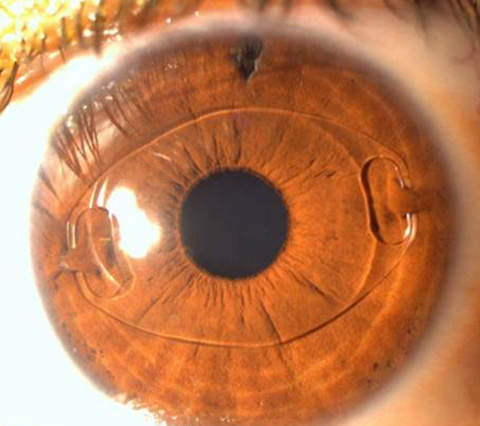Iris-Fixated Phakic Intraocular Lens Implantation
 For high to extreme myopia and hyperopia, the iris-fixed lenses are currently considered the best choice as long as they meet safety requirements. These requirements are:
For high to extreme myopia and hyperopia, the iris-fixed lenses are currently considered the best choice as long as they meet safety requirements. These requirements are:
- Endothelial cells count above 2,000 cells x mm2
- Anterior chamber depth higher than 3.2 mm.
- Refractive defect myopia or stable hyperopia. Therefore, patients must be at least 20 years old.
- A retinal examination to verify the condition of the macula, because in extreme myopia, the posterior part of the retina, where the macula is mainly affected, and find neovascular membranes that can cause hemorrhaging and myopic retinal degeneration that can affect vision quality. Also, these patients have a greater risk of retina tears, which is why they should be carefully evaluated.
This procedure has an excellent visual prognosis, corrects more than 90% of refractive defects, is stable for life, and does not alter when cataracts appear, exchanging the phakic lens with the lens that replaces the cataract placed in the capsular bag. This procedure has the same risks as any intraocular surgery.
Special recommendations for patients who have undergone this surgical procedure include avoiding bad habits such as rubbing the eye; sleeping on the eye; and contact sports such as soccer, boxing, and others. Patients should also have annual follow-ups to perform an endothelial cell counts and verify.


